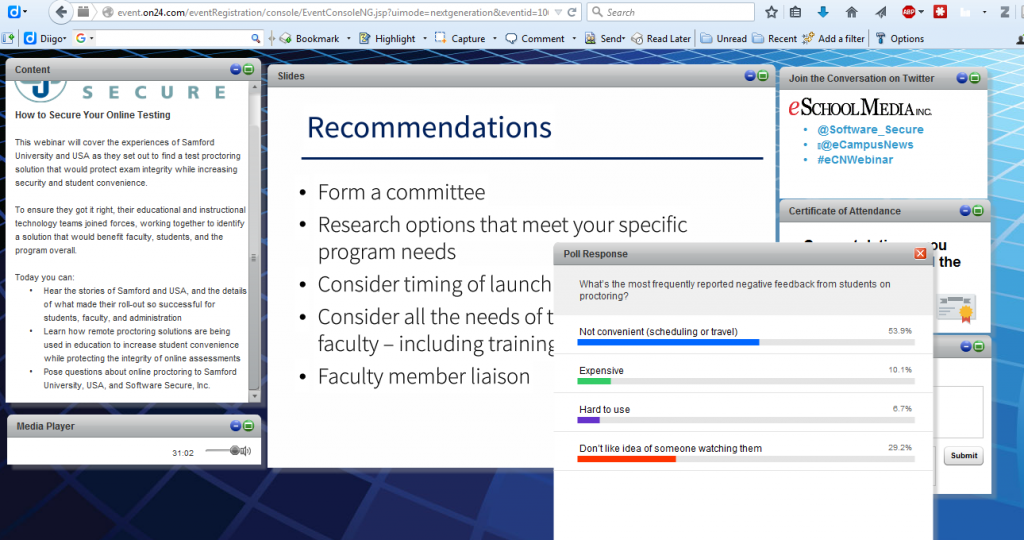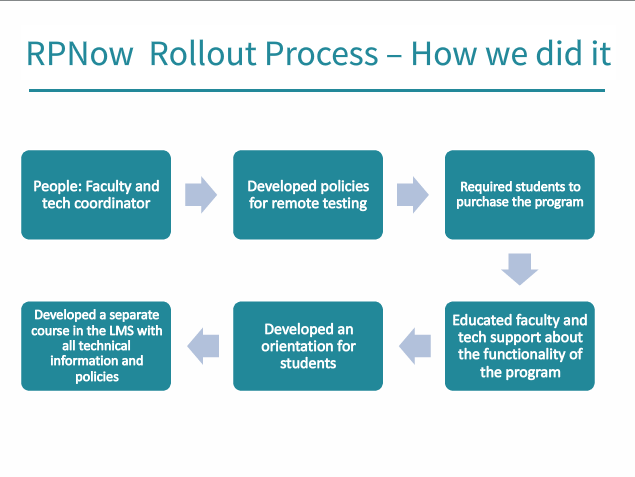Educause 2015
Gamify! Play! Learn! Turn Campus Resources into Exciting Learning Experiences
- Gamification is the use of game mechanics and
game design techniques in non-game contexts.
- Gamification uses the natural desire for competition, achievement, status, altruism and/or collaboration (depending on the personality type).
- Objectives: A behavioral mechanic type, requiring the user to take action for the reward.
- Progression: Move the user through the content.
- Feedback: Informing the user of their status
Gamification Mechanic Benefits Each gamification mechanic result in one or more benefits.
Gamification Personality Types
People are motivated to play games differently.
Explorers: Pride themselves in exploring all facets of a game or the context surrounding it.
Killers: Driven by player vs player competition. Always comparing themselves to others.
Socializer: Prefers to chat, play cooperatively, and share game experiences with others.
Achievers: Look to achieve all objectives available in a game. Desires to beat the game itself.
==========================
Adaptive Learning in Online Learning: Results from an Ongoing Evaluation
Adaptive learning systems provide each student with a personalized learning experience, adapting the presentation of the content, and possibly the assessment to the individual ability of the student
==============================================
Badges: A New Mode for Faculty Development
Outcomes: Understand the basics of a three-tiered framework for digital badges * Review the online badging platform * Explore topics for faculty development
http://www.educause.edu/sites/default/files/library/presentations/E15/PS18/Educause2015.pptx
=============================
Open Digital Badges: Microcredentials and the Higher Ed Landscape
Outcomes: Understand the open badge ecosystem and how it benefits learning in higher education * Review digital developments in badge delivery * Discover contexts for the future of badges. Daniel Hickeyhttp://www.educause.edu/library/resources/where-badges-work-betterA Framework for Interactivity in Competency-Based Courses: http://er.educause.edu/articles/2015/8/a-framework-for-interactivity-in-competency-based-coursesBadging in a Learner-Centered Context http://er.educause.edu/multimedia/2015/8/badging-in-a-learner-centered-context
Mozilla Open Badges 101: Digging into Badges (a webinar)
personalized learning or competency-based does not resolve it. GPA does not respond to employers search
regimenting credentials. digital representation of of skill or achievement. represent achievements on the web. social status (foursquare). granular, evidence-based and transferable. badge ecosystem (across multiple areas), this is why open badges; open system. Open Badge Standard: issuer information; earner information; criteria URL; evidence URL; Standards Alignment; Taxonomy Tags
=============================
Data Visualization: The What, the Who, and the How
OUTCOMES: Identify multiple opportunities for use of data visualization * Learn about multiple user communities, including those not centrally managed * Explore ways to support users and steer them toward good practiceshttp://www.educause.edu/sites/default/files/library/presentations/E15/SESS029/Data%2BViz%2BEducause%2B151028%2BFINAL1.pptxslides 7: What works well for technically savvy developers may not work for faculty or staff without those same credentials.
- Data Wrapper
- Raw
- Infogram
- Tableau
-
- Oracle suite of OBIEE (Oracle Business Intelligence Enterprise Edition) has been very successful for CSU
- Cognos (IBM) is another tool that is very popular for developers and has been used by USG central office
- D3 (For Data Driven Documents)
- Fusion Charts
- Chart js
- Google Charts
slide 11: Two primary design goals supported through Data Visualization:
- Discovery and Exploration
–What story is the data telling you
–Identify patterns and exceptions
- Decision-making
–Compare, contrast, choose
–Explain, make a point, decide
slide 15:
qTo communicate
qPresent more clearly or more forcefully than would be accomplished with text or tables
qReports, dashboards, infographics, etc.
qTo discover
qAllow us to see what would be difficult or impossible to see if not presented in a useful visualization
qRealm of research but moving into the mainstream
qCan same visualization serve both purposes?
======================
iPad, You Pad, We All Pad: Transforming Teaching and Learning
Outcomes: Learn about the transformational impact of one-to-one iPad initiatives in the classroom * Understand the need for extensive faculty development and faculty adoption strategies * Appreciate deployment and support challenges====================
The Avalon Video and Audio Repository for Libraries and Beyond
Outcomes: Understand the problems Avalon solves * Understand the extended use cases addressed with Avalon, both present and intended future * Learn how best to engage with the Avalon project.========================
Karuta: Design Your Own Portfolio Process
Supporting the Discovery and Adoption of Open E-Textbooks
Outcomes: Identify quality open textbooks for general education, high-impact courses * Learn how to interpret textbook peer reviews with a faculty-created rubric * Understand how to reference these resources for the discovery of quality no- or low-cost materialshttp://www.educause.edu/sites/default/files/library/presentations/E15/PS58/COOL%2BEducause%2BPoster%2B2015.pdf
Seminar 12P – Six Secrets for Evaluating Online Teaching (separate registration is required)
OUTCOMES: Distinguish online content and practices that “count” as teaching behaviors * Design self-, peer-, and administrative-evaluation analytic tools * Develop a 6-stage, campus-wide program for evaluating online teachinghttp://www.educause.edu/annual-conference/2015/seminar-12p-six-secrets-evaluating-online-teaching-separate-registration-required
========================
Reimagining Learning Space Design across the Disciplines
Outcomes: Identify and apply the principles of active learning associated with learning space deign * Understand the design process * Assemble an effective learning space design teamhttp://www.educause.edu/annual-conference/2015/reimagining-learning-space-design-across-disciplines
==============================
Thinking Digitally: Advancing Digital Literacy with Personalized Learning Tools
Outcomes: Understand the value of incorporating digital literacy into curriculum * Select from emerging personalized learning technologies to support digital literacy across diverse academic scenarios * Adapt a methodology for developing partnerships to advance digital literacy across the organizationhttp://www.educause.edu/annual-conference/2015/thinking-digitally-advancing-digital-literacy-personalized-learning-tools===============
What’s That Droning Overhead?
Outcomes: Learn about the drone devices in use, from miniature to massive * Understand the impact of drones on academic institutions, for better or worse * Learn what drone activities are legally allowable, banned, or discouragedhttp://www.educause.edu/annual-conference/2015/whats-droning-overhead
https://drive.google.com/file/d/0B4vcm8Bg5pkcWFlaQ1J3b3duc2M/view
5. Using small unmanned aerial vehicles today is similar to the “fair use” of media
http://www.dronesurvivalguide.org
Resources – Higher Ed Drone Policies
The Ohio State University
Iowa State University
Indiana University
University of Kansas
Penn State University
University of New Mexico
The Association of College and University Policy
Administrators (ACUPA, acupa.org)
===================


